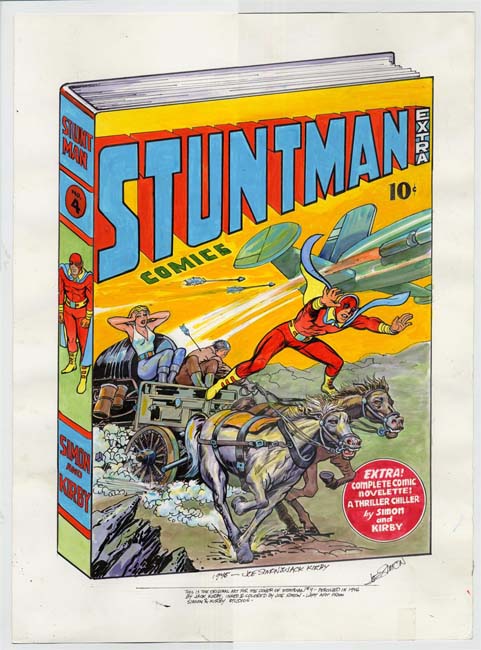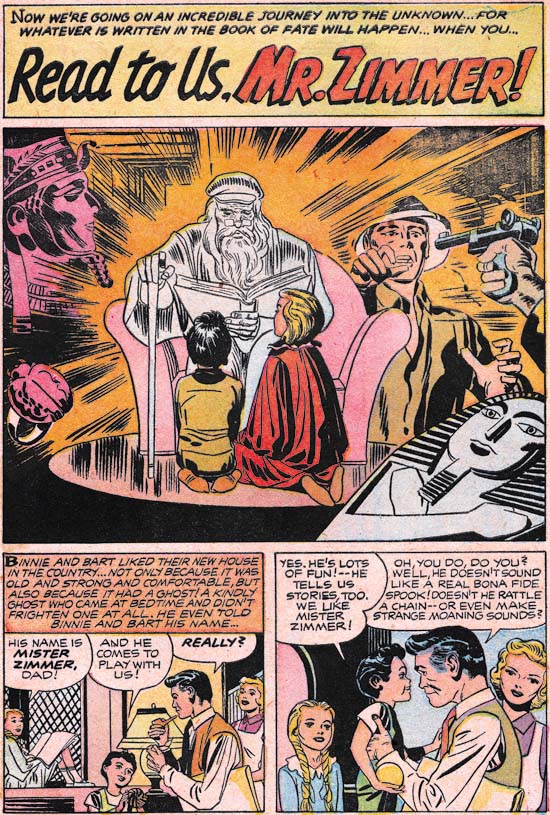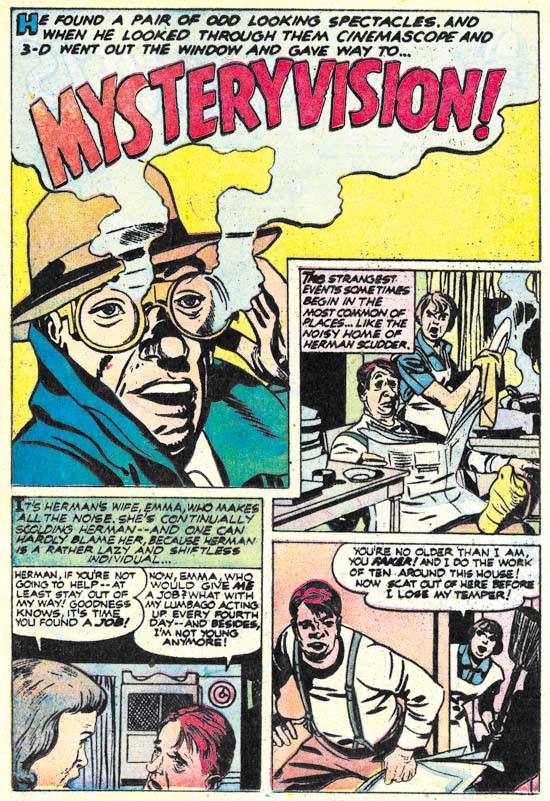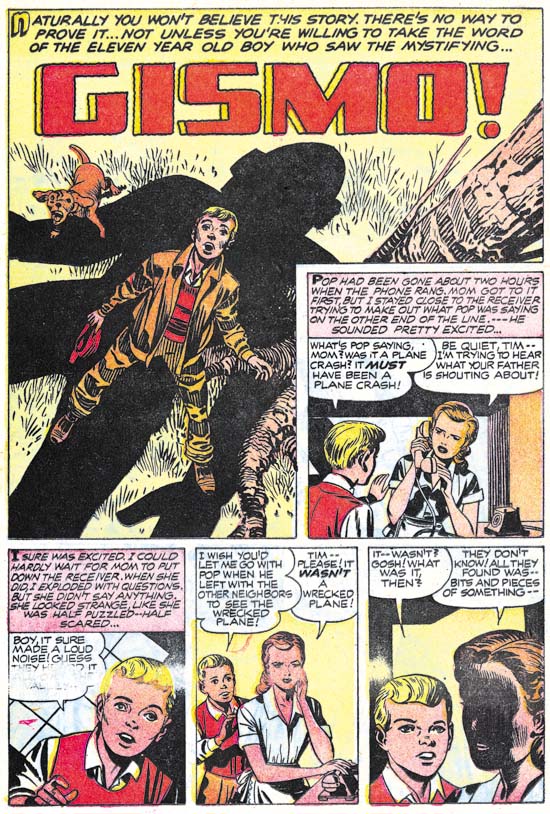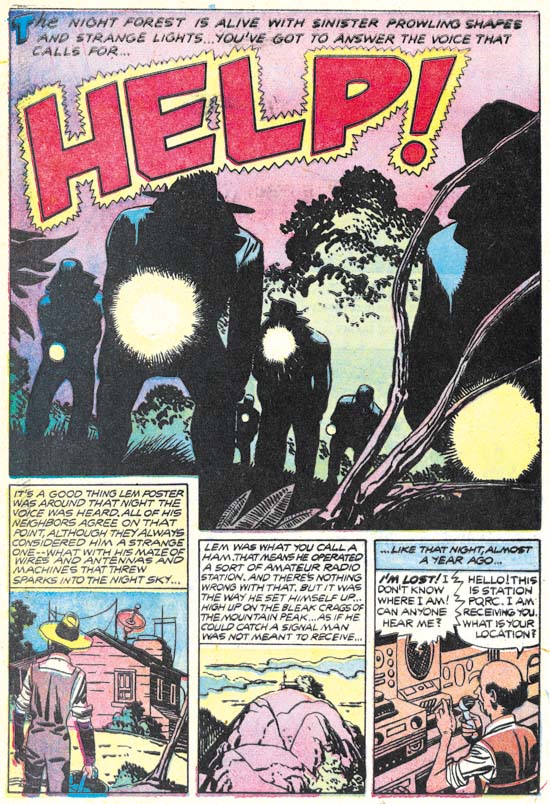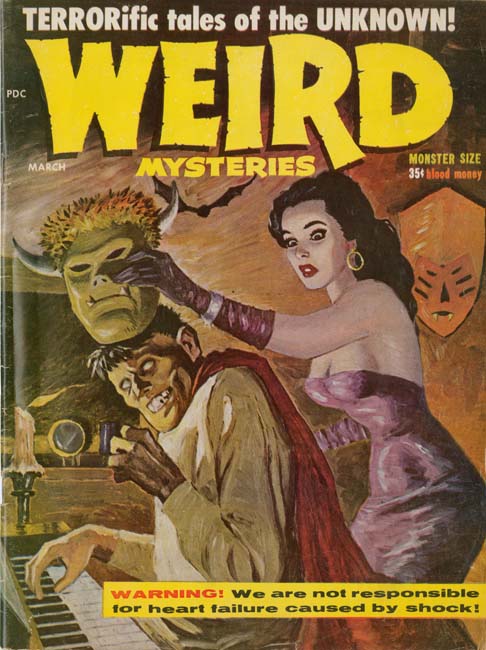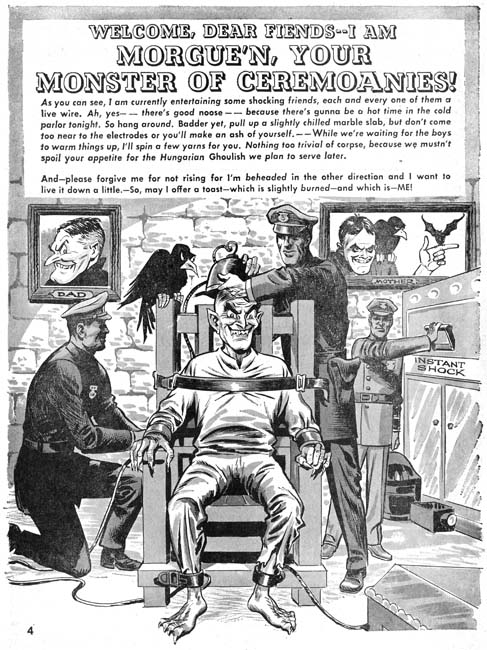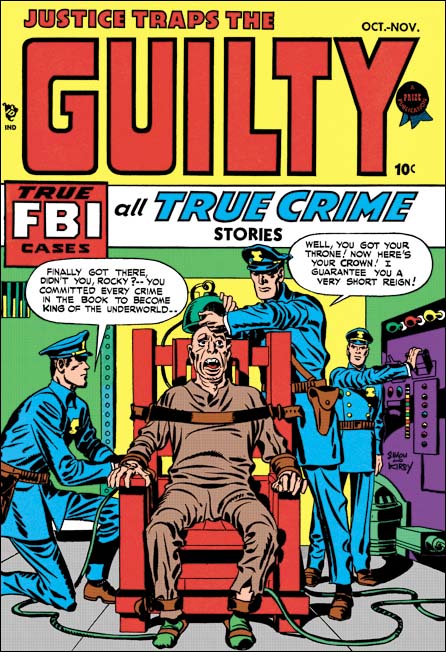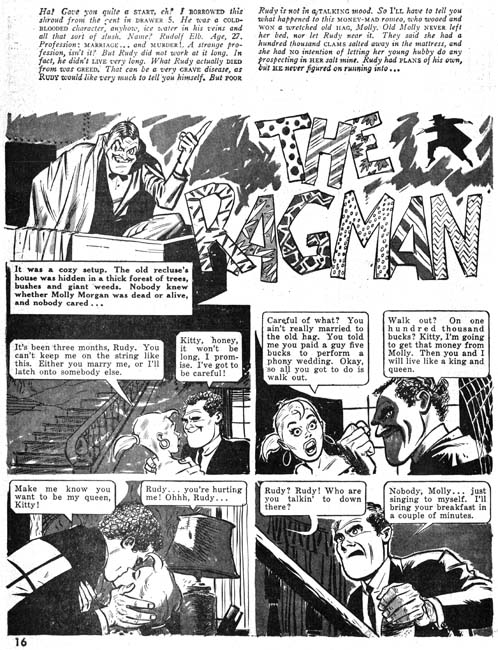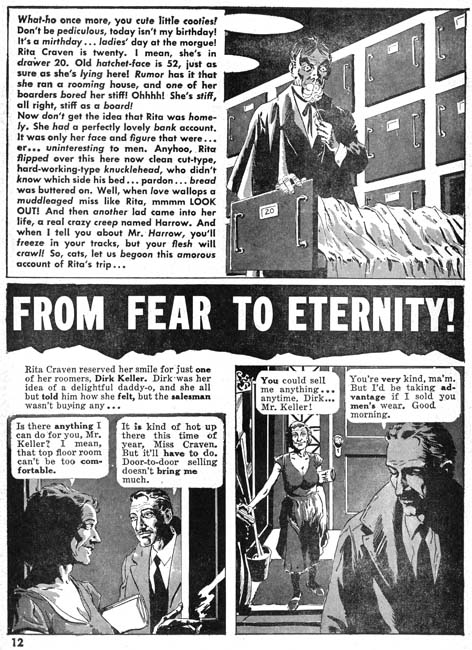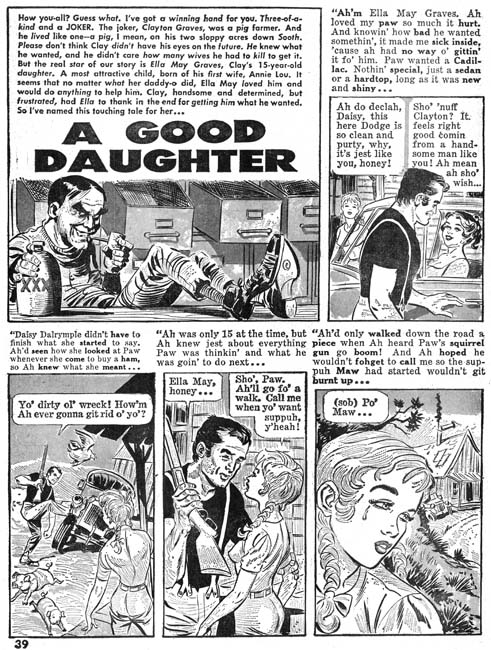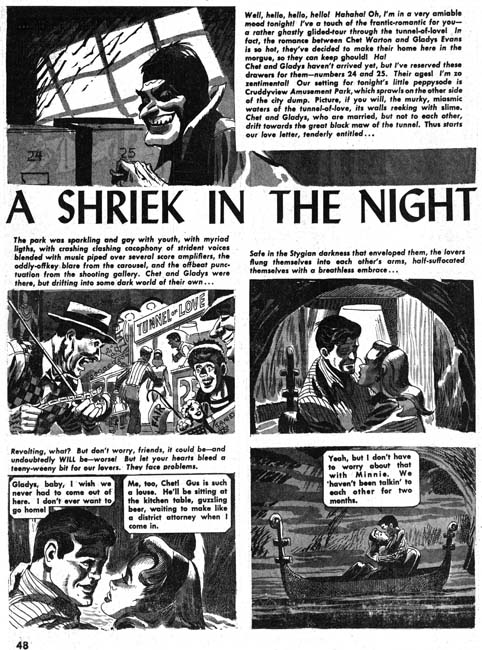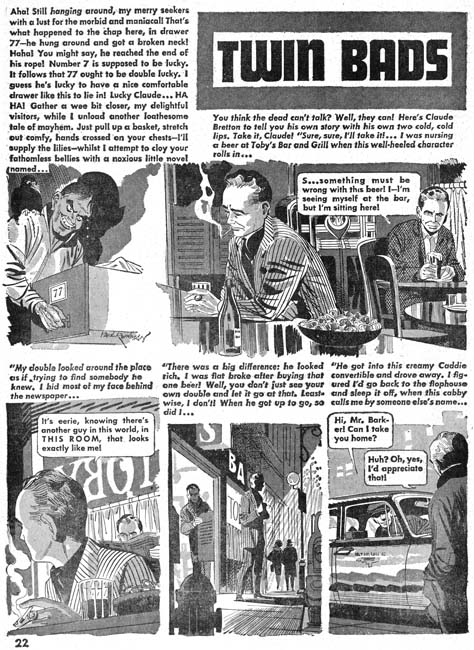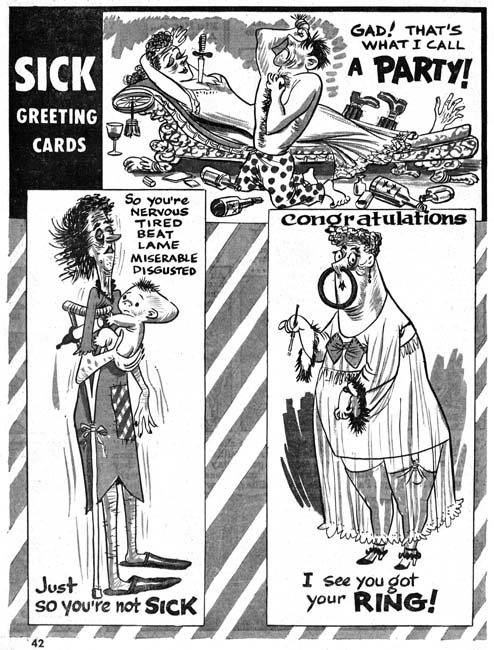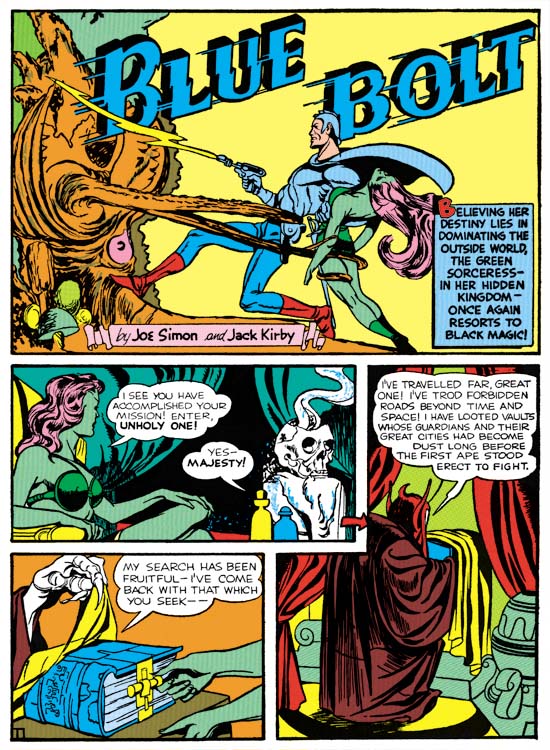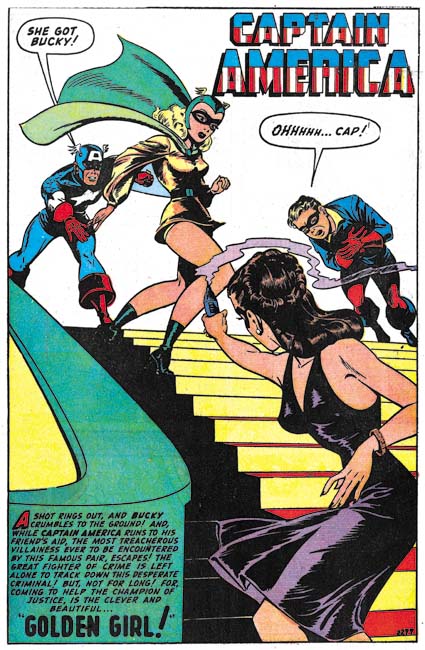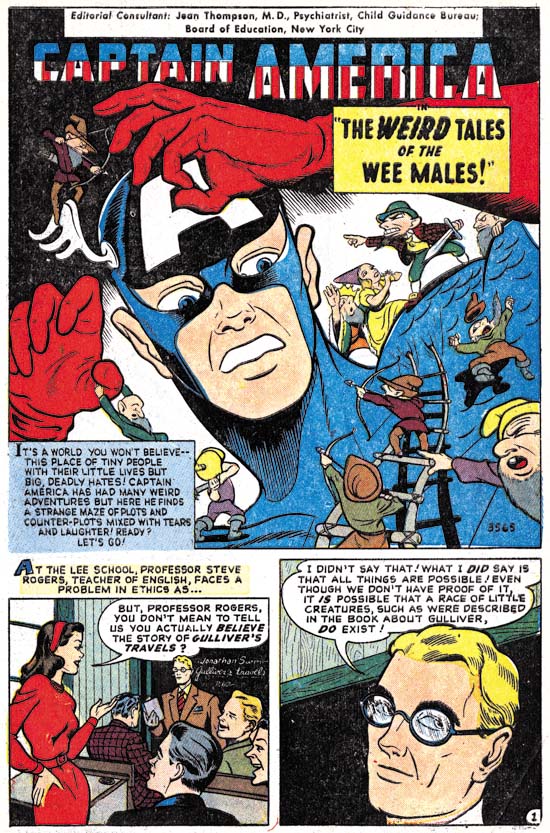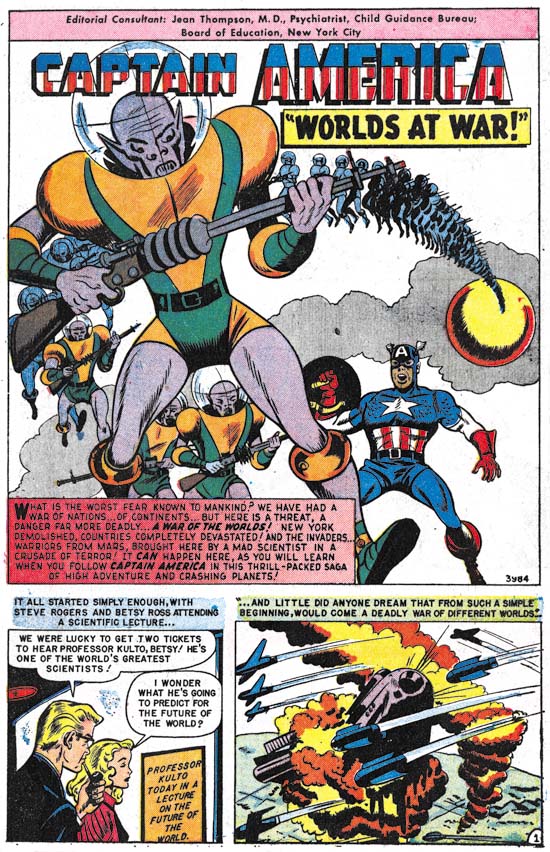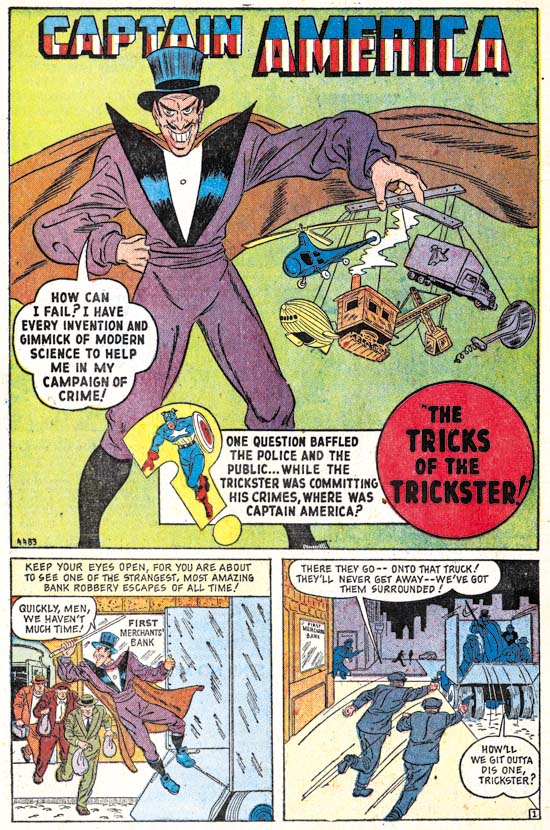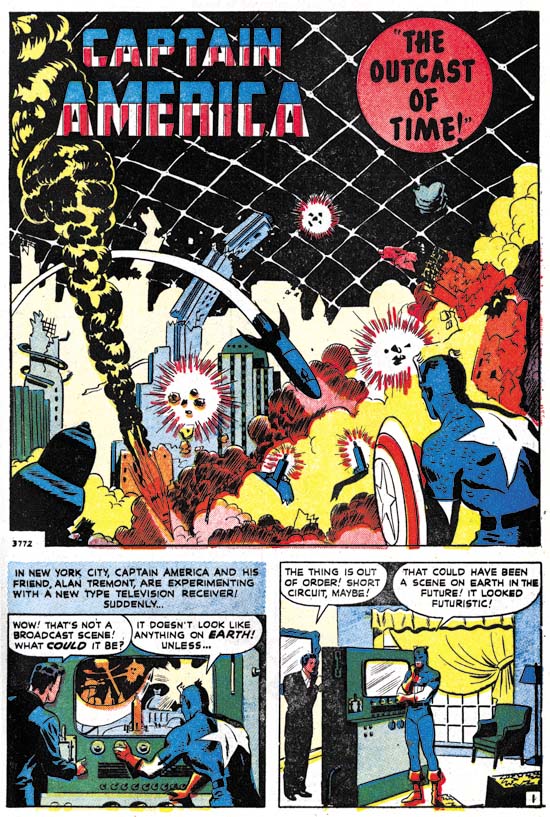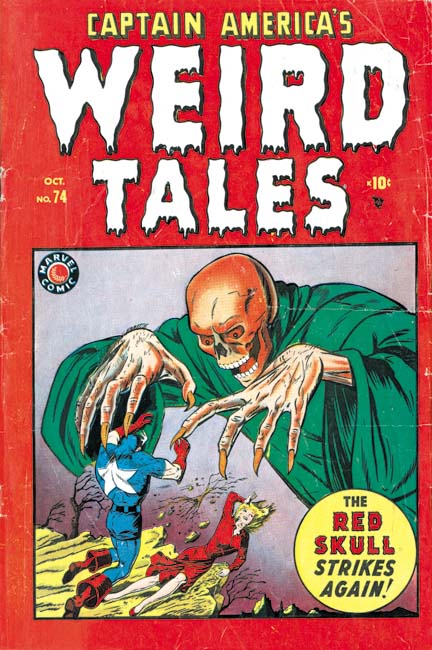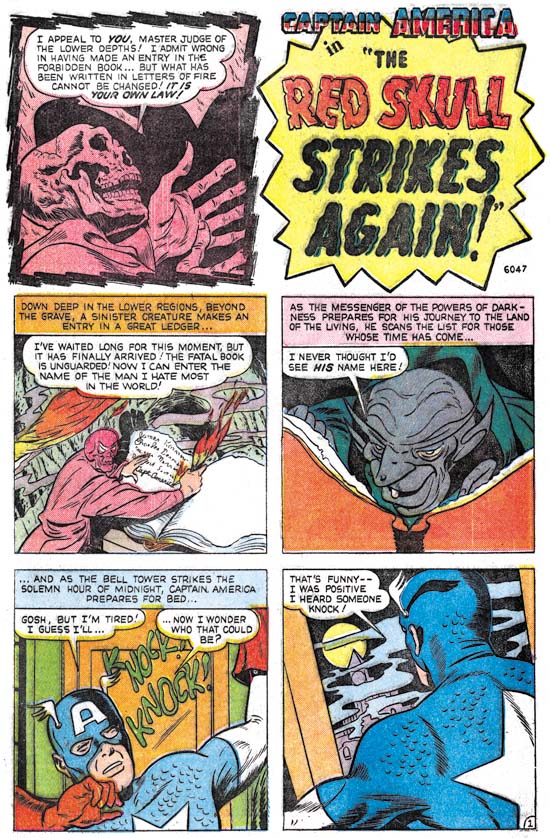Unfortunately I do not have access to any of the Captain America Comics from immediately after the war ended. It would be interesting to see how Timely handled the transition to peace. Did they use up stories about Axis spies even after the war had ended? Or did they trash the outdated stories and create new ones? Or rework them to seem new? With the war over Captain America might seem a hero without suitable foes. Actually the post-war period was a difficult time for all superheroes, not just the patriotic ones. But Cap problems really began during the war. Captain America Comics became a bi-monthly with issue #42 (October 1944), a clear indication of diminished sales. Because Cap never was a true Super Soldier, the transition from spy smasher to crime fighter really was not that great.
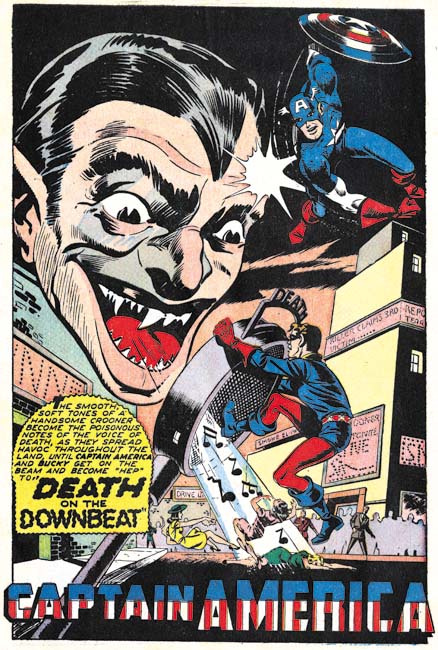
Captain America #57 (July 1946), “Death on the Downbeat”, pencils by an unidentified artist
Identification of the artists working on Captain America is a greater problem in this chapter compared to previous ones. There is not a single artist signature from Captain America #57 on. (Such a complete absence of signatures surely was a policy decision.) The way inking was handled seems to have changed. Previously the same inker would be used on a particular penciller. It appears that Al Avison was generally inked by Syd Shores and when Syd Shores became a penciller he was inked by Vince Alascia. While I have not been able to identify the other Cap pencillers they seemed to be finished by the same unidentified inkers. However after the war it seems that the inker used for a particular penciller could vary. Another problem is that the quality of the art had become more variable. None of the art produced after the war ended seems to have the attention to detail that previously was found.
The GCD lists Al Avison as the artist for “Death on the Downbeat”. There really is nothing by Avison that seems comparable. Certainly his earlier Captain America art was done in a very different style. But that may not be a sufficient criteria since some artists returned from the war with a changed style. Some art by Avison was appearing in some Harvey titles at this time so he was back working as a comic book artists. I have not seen Avison’s Harvey work from this same time but a story done a year later is in a very different style. Although without some uncertainty my opinion this was not done by Al Avison. The boots that Cap and Bucky wear lack flaring and so I am sure this was not done by Syd Shores either. Whoever the artist was he did a real nice job. Look at the great handling of Cap in an unusual perspective although it is always possible this was swiped.
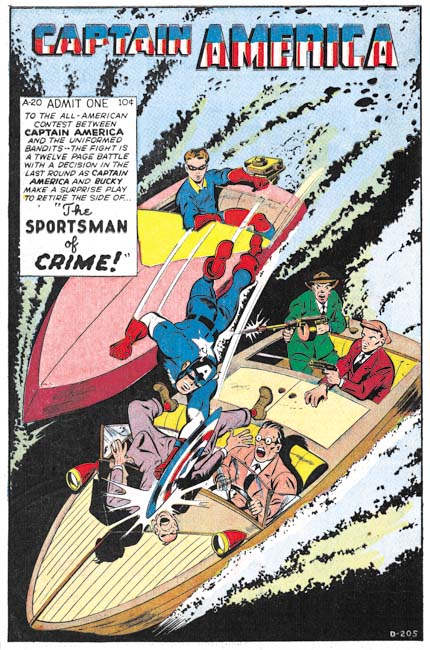
Captain America #58 (September 1946), “The Sportsman of Crime”, pencils by Dick Briefer?, D-205
GCD also lists Al Avison as the artist for “The Sportsman of Crime”. The thugs in the splash seem consistent with Avison’s style. However Cap’s figure is much more robust that I have seen Avison use. The rest of the story art is even further removed from Avison’s style. It does remind me of another artist’s work and here I am really going out on a limb but I think it may be Dick Briefer. Briefer was doing Frankenstein and an occasional Prize Comics Western piece for Prize Comics in a much more simpler and cartoon-like style so this attribution might seem a bit far fetch. However Dick used a more realistic style both earlier and later in his career. The Human Top story Briefer did for Red Raven Comics #1 (August 1940) is actually a fairly good match for “The Sportsman of Crime” despite the years that separate the two works. Unfortunately I have not seen anything by Briefer in a more realistic style from this period to compare with so I consider my attribution to Briefer as very tentative. Since this is a blog I prefer to voice my latest opinions even though there is a good chance that I may change my mind in the future.
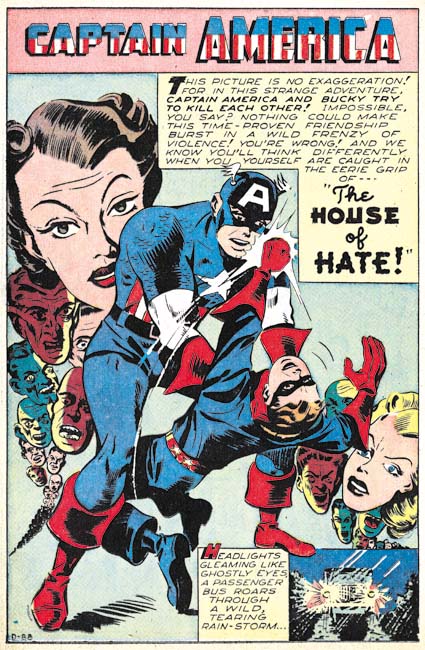
Captain America #58 (September 1946), “The House of Hate”, pencils by an unidentified artist, D-88
I have no idea who the artist might have been for “The House of Hate” and frankly he is not one of the better artists used in Captain America. But I use it here as a segue into a short discussion of job numbers. Job numbers were not used for Timely art during the war years but become prevalent afterwards. During the period covered in this chapter there is only a single story without a job number somewhere in the splash. There really is nothing that can be said with any certainty about the significance of the job numbers other than they obviously were used to help keep track of the work. Other than that we are left with deductions based on the occurrence of the job numbers themselves.
The best discussions of job numbers can be found in Tom Lammers’ “Tales of the Implosion”. Lammers has observed that there are three periods; at first job numbers had a prefix (D, R, SL and others), by 1948 the job numbers were without prefixes, and finally starting in 1952 prefixes returned. But there is a difference between the two prefix periods. During the final period prefixes seemed to be reintroduced as a method to simplify overlong job numbers. As the job number for a given prefix became too large a new letter (generally the next letter in the alphabet) was chosen and the numbering restarted. Thus generally there would be no long periods of concurrent use of two or more different prefixes.
In the earlier period prefixes were used concurrently. The prefixes found in the Captain America Comics covered in this chapter are ‘D’, ‘R’ and ‘SL’. Within each prefix series the numbers generally increase with time but not with any great consistence. For instance issue #58 has one Cap story with the job number D-88 and the other D-205. The numbers for prefixes ‘D’ and ‘R’ were lower and seemed to progress slower than those for ‘SL’. The ‘R’ job numbers appear only in the Human Torch stories that appeared in each issue of Captain America Comics and only one Human Torch story has a ‘SL’ prefix. With two exception the Captain America stories all have ‘D’ or ‘SL’ job numbers. One exception was one without any job number and another with a job number without a prefix. The prefix-less job number is in the same numerical range as some of the ‘SL’ job numbers so I suspect the ‘SL’ was just inadvertently left off.
So what does it all mean? Well it seems likely that ‘SL’ has some connection to Stan Lee. But what connection? My interpretation is that the prefix has some editorial connotation. ‘SL’ job numbers were used for stories that Stan Lee was the editor while the ‘D’ and ‘R’ were for stories handled by another editor. Now that interpretation is nothing more than a working hypothesis but if it is true may help in winnowing out the stories that could have been written by Stan Lee. Not that an ‘SL’ job number means that Lee wrote the story but rather any story with a ‘D’ or ‘R’ prefix number would probably not have been written by Stan.
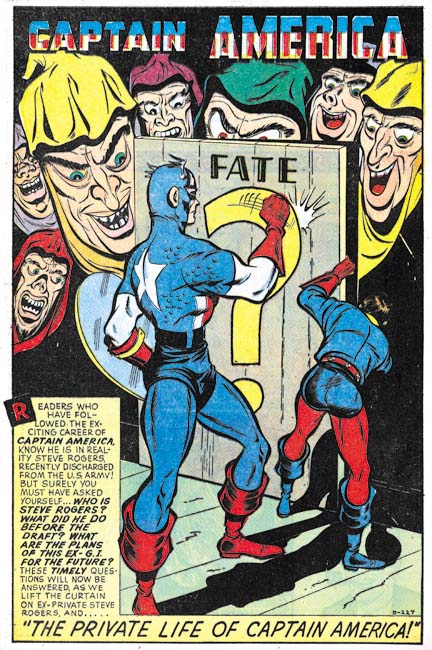
Captain America #59 (November 1946), “The Private Life of Captain America”, pencils by Dick Briefer?, D-227
Captain America #59 marked a special occasion as it formally brought Captain America into the post-war period. Previously Cap’s alter ego, Steve Rogers, was a private in the army. With the war over he now became a teacher and Bucky became his ward and pupil. With his spy-smashing days behind him (or at least for now) Roger’s life as a civilian simplified his new crime fighting career.
Issue #59 also provided the first editorial credits that have appeared in Captain America Comics for some time. Stan Lee was the Editorial and Art Director, Syd Shores the Art Associate and Al Sulman the Editor. I do not know if this marked the first Cap issue since Stan Lee returned from the military but it is suggestive that previous Captain America issues lacked ‘SL’ job numbers.
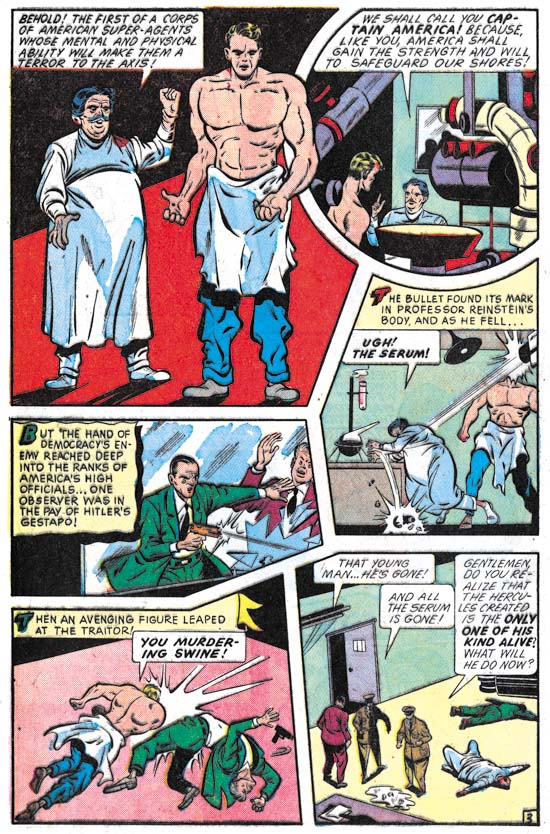
Captain America #59 (November 1946), “The Private Life of Captain America” page 3, pencils by Dick Briefer?
“The Private Life of Captain America” also includes a retelling of Captain America’s origin story. I believe this is the first time Cap’s origin has been told since his creation in March 1941. The story follows the original one close enough that I suspect the artist and writers were using a copy of Captain America Comics #1 as a reference.

Captain America #59 (November 1946), “House of Hallucinations”, pencils by Syd Shore, SL-663
“House of Hallucinations” matches Syd Shore’s style so well that a signature really is not required to provide him credit. With all the fine inking I wonder if Shores was inking himself as well. It is a great splash with lots of action going on.
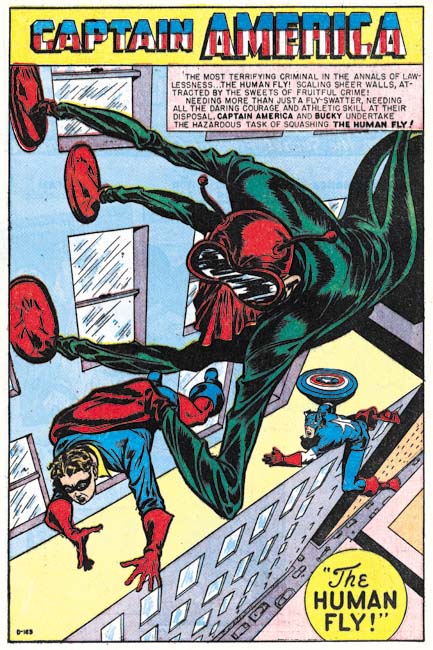
Captain America #60 (January 1947), “The Human Fly”, pencils by Syd Shores?, D-163
It seems so obvious today that if you are going to have a superhero you should also have super-villains for him to combat. But this simple concept was not followed very often during the golden age. Most of Captain America’s foes were nothing more than spies or criminals. Some might put on a costume but otherwise they were just normal people. The Human Fly of this story is an example of a proper super-villain. Not only does he have a costume and a secret identity but he has special gear that allows him to walk up walls (he was not bitten by a radioactive fly).
I like this splash but there are lots of problems with the perspective. The Human Fly’s foot and hand gear does not sit properly on the building’s side, the perspective of the upper part of the building is at odds with the lower part, and Captain America is precariously placed on the ledge (although that might have been intentional). But the odd perspective used in portraying the Human Fly and Bucky seemed handled rather well. This is all not surprising if my attribution of this piece to Syd Shores is correct. Shores did a better job handling perspective than most golden age artists but he still had problems with it.
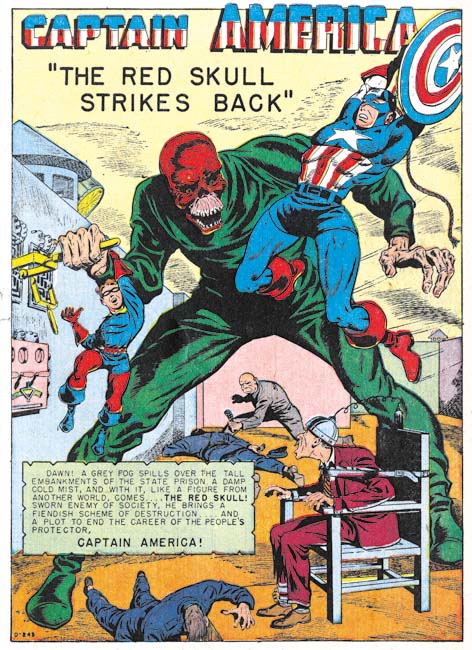
Captain America #61 (March 1947), “The Red Skull Strikes Back”, pencils by Syd Shores?, D-243
The Red Skull was Captain America’s arch nemesis during the period he battled Axis spies and saboteurs. The reader may be forgiven for thinking that the Red Skull would have been dropped now that the war was over. But of course he was much too impressive a villain to retire. No explanation was given on why he was back and had become just another criminal mastermind. Captain America in the splash is a mirror image swipe from the cover to Captain America #7 (see Genesis of a Cover, Captain America #105). Not a close or mechanical copy but a swipe nonetheless. Such swiping is unusual in either Captain America Comics or art by Syd Shores.
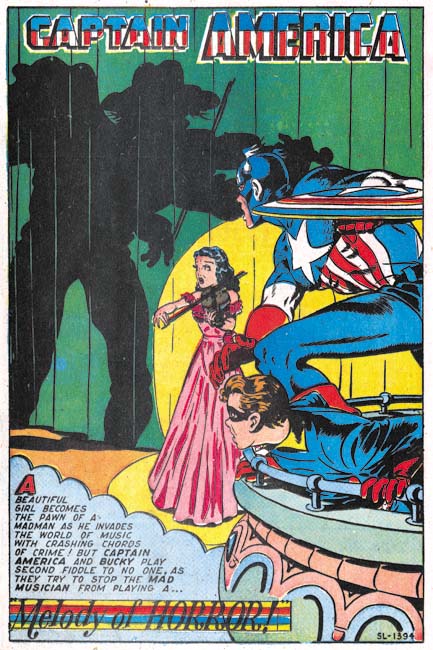
Captain America #62 (May 1947), “Melody of Horror”, pencils by Syd Shores, SL-1394
I do not believe all the Captain America art from this period was done by Syd Shores but it does seem that all the interesting art was. The splash for “Melody of Horror” is simply a great compositions. Only the villain shadow is shown which make him all the more mysterious and threatening. The unusual posses of Cap and Bucky are handled very well. The lady violinist, the center of all the attentions, seems sufficiently endangered. What more can you ask from a splash?
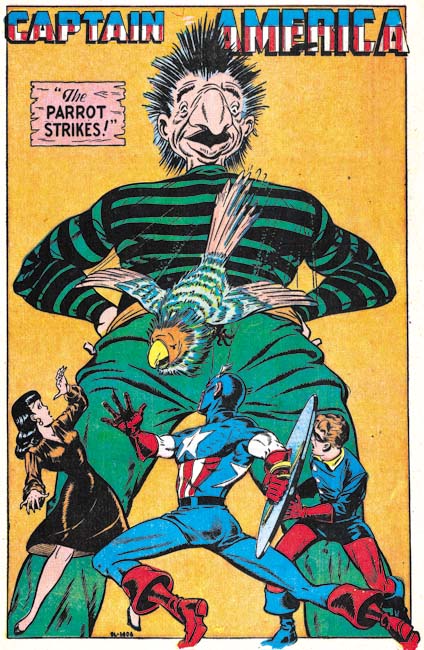
Captain America #63 (July 1947), “The Parrot Strikes”, pencils by Syd Shores, SL-1406
Is it just me or are some of the villains just lame. I mean how dangerous could a bad guy called the Parrot be? How threatening could a big nose be? This splash reflects Shores often penchant for symmetrical and triangular compositions. The one saving grace is the very dynamic pose that Shores has given Captain America.
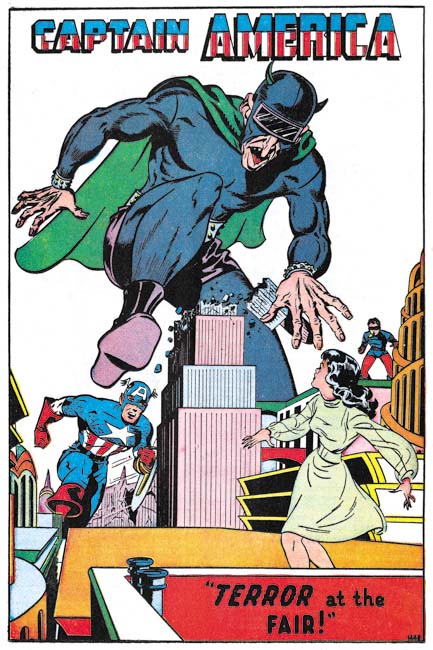
Captain America #64 (October 1947), “Terror at the Fair”, pencils by Syd Shores, 1445
Another triangular and somewhat symmetrical compositions. But in this case the villains’ dramatic stomp saves the day. It helps that the villain wears a costume. He may not have had true super-powers but at least he was no ordinary criminal.
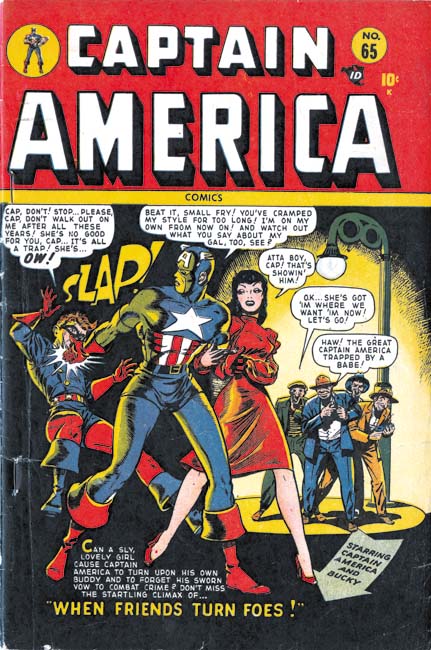
Captain America #65 (January 1948), pencils by Syd Shores
For these posts I have concentrated on the stories and not the cover art. During the war many of the covers were done by Alex Schomberg. Schomberg was a great artist but his covers generally had nothing to do with the comic book’s contents. But the cover for Captain America #65 actually does a better job of indicating the theme of story “When Friends Turn Foes” than the splash does. Horrors, a woman has come between Captain America and Bucky. Say it ain’t so! Well of course it ain’t so. But it appears that Timely was thinking about Captain America and his partnership with Bucky which would lead to dramatic changes that began in the next issue. It is also a good place to end this post but next week I hope to discuss what I believe are some of the most interesting Captain America comics since Simon and Kirby left Timely.


